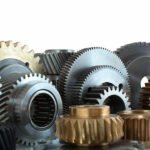In several fields and applications, linear actuators are crucial mechanical devices. These components are essential in many automated machinery and systems because they transform rotational motion into linear motion. You’ll gain more knowledge about linear actuators thanks to this post.
Basic Components of a Linear Actuator
A linear actuator is made up of several essential parts, each of which contributes to its operation. The motor, the leading screw or drive rod, the bolt, and the housing are the linear actuator’s main parts. To comprehend how linear actuators function, it is imperative to comprehend how these components interact. The motor produces the rotating motion and is then transferred to the lead screw or driving rod. When a screw or rod spins, the nut contacts with it, allowing it to travel linearly. These parts are enclosed by the housing, which shields and supports the actuator.
Working Principles of Linear Actuators
The transformation of rotary motion into linear movement is the basic idea underlying linear actuator applications. The contact between the motor with the lead screw or drive rod results in this conversion. This procedure may utilize electric, pneumatic, hydraulic, or mechanical processes depending on the kind of actuator. Electric linear actuators convert rotary motion into straight lines by driving the lead screw or driving rod with an electric motor. Pneumatic actuators employ compressed air to produce the same force that hydraulic devices rely on from pressurized hydraulic fluid. Mechanical linear actuators transform rotational motion into linear motion by using mechanical elements like belts or gears.
Types of Linear Actuators
There are several linear actuator kinds, each created for uses and specifications. Each kind differs from the others in terms of its advantages, disadvantages, and suitability for activities. Here are the following types: When accurate control and position are necessary, electric linear motors are adaptable and often utilized:
Electric Linear Actuators
One of the most popular and adaptable varieties is electric linear actuators. They move the load linearly by driving the lead screw or drive rod with an electric motor. These actuators are frequently utilized in automation and robotic systems that need precision control and placement. The benefits of electric linear actuators include their ability to deliver exact linear motion, simplicity of control, and silent operation. Due to their adaptability and dependability, they are used in a variety of industries, including healthcare and automotive.
Hydraulic and Pneumatic Linear Actuators
The force produced by fluid pressure is what drives linear actuators that are hydraulic and pneumatic. While pneumatic systems employ compressed air to operate the actuator, hydraulic ones use pumps to pressurize hydraulic fluid. These actuators are frequently employed in demanding industrial applications and are recognized for their strong force capabilities. Excellent force production is offered by hydraulic linear actuators, which may also function in challenging conditions. Pneumatic linear motors are appropriate for activities requiring great force and quick movement. These actuator types are frequently utilized in heavy sectors like manufacturing and construction.
Mechanical Linear Actuators
Belts, pulleys, and gears are used in mechanical linear actuators’ operation. These simple actuators are frequently employed in situations where accuracy is not a top priority. They are frequently discovered in home objects like vehicle jacks and garage doors. Because they are dependable and durable, mechanical linear actuators are appropriate for a variety of jobs. They might not have the same level of accuracy and control as electric, hydraulic in nature, or pneumatic actuators, though. These actuators are ideal for uses where dependability and simplicity are valued highly.
Applications of Linear Actuators
There are several uses for linear actuators in numerous sectors. They are employed in a wide range of industries, including robotics, production, automotive systems, aerospace, and medical devices. They are crucial to contemporary technology and automation because they can deliver accurate and regulated linear motion. Linear actuators are utilized in robotics for things like controlling grippers and arms. They support the automation of production processes and other operations in manufacturing. For tasks like changing seats and converting roofs, automotive systems use linear actuators. In the field of aerospace, linear actuators are used to control aircraft parts. They are used by medical devices to provide accurate motions for surgical instruments and imaging equipment. Because of its adaptability, linear actuators are still an essential part of automation and technology in various domains.
Conclusion
Understanding how linear actuators work is crucial for workers, engineers, and anybody working with automated systems. These devices served as the impetus for several technological advancements and will continue to play a crucial role in the development of creative solutions across numerous industries. The function of linear actuators grows more and more important as technology advances and industries require more accurate and regulated motion, making them an essential part of contemporary engineering and automation.
















